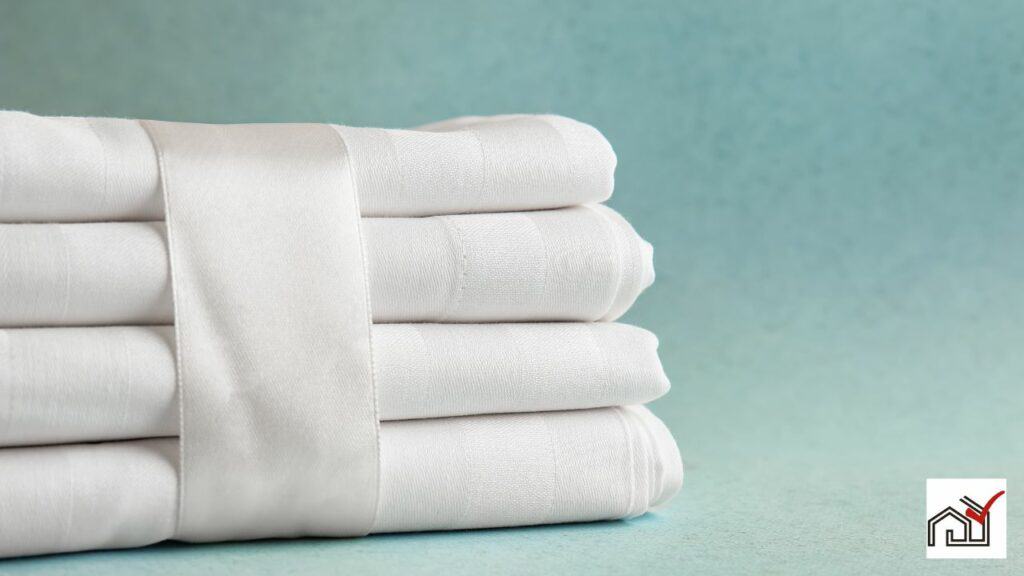You can wash the cover of a memory foam mattress. It's usually removable due to a zip feature, making it easy to clean. Always check the manufacturer's care instructions before washing.
Commonly, the cover should be washed on a gentle cycle with cold water and air-dried. Do not wash the memory foam; it should only be spot cleaned and aired out to avoid damage.
Washing the cover helps remove dust, allergens, and stains.
Understanding Mattress Covers
A mattress cover protects memory foam from spills, stains, and wear while adding comfort. It acts as a barrier to extend the mattress's life and maintain cleanliness. The cover should be regularly cleaned, and most have a zippered design for easy removal.
For cleaning memory foam, avoid harsh chemicals that could damage the material. Wash the cover on a gentle cycle with cold water and tumble dry on low heat. Spot clean stains immediately with a cool, damp cloth, avoiding hot water, which can set protein-based stains.
Using a mattress cover makes cleaning simpler by allowing separate washing from the mattress. Follow the manufacturer's care instructions to prevent damage to the cover and memory foam, which could void the warranty. Proper care keeps your mattress clean and comfortable.
Checking Manufacturer Instructions
Before washing your memory foam mattress cover, consult the manufacturer's instructions to ensure proper care and prevent warranty issues. Memory foam mattresses require careful attention to keep them comfortable and durable. The cover protects the foam and ensures cleanliness.
Memory foam mattress covers are often removable and machine washable, but it's crucial to follow the manufacturer's washing guidelines to avoid damage such as shrinkage or tears.
Avoid using harsh chemicals on the memory foam mattress or cover, as they can break down the foam. Instead, use mild detergents and avoid bleach and fabric softeners.
If your mattress doesn't have a removable cover, get a mattress protector suitable for memory foam and follow its care instructions to avoid mattress damage.
Adhering to the manufacturer's instructions is essential for maintaining your memory foam mattress and cover, preserving the mattress's quality and ensuring a hygienic sleep environment.
Removing and Laundering Covers
To wash a memory foam mattress cover, first unzip and take it off the mattress. Make sure it's clean of any dirt that could interfere with washing. Check for stains that might need spot cleaning before washing the full cover.
Follow the care instructions closely when washing the cover to prevent damage. Wash in cold water on a gentle cycle with a mild detergent made for delicate items. This will protect the cover from damage and shrinking.
Dry the cover on the lowest heat setting if using a tumble dryer to avoid moisture build-up, which can cause mold or mildew. Ensure the cover is fully dry before putting it back on the mattress. Alternatively, air dry by laying it flat or hanging.
Regularly washing your mattress cover keeps your sleeping area clean and can increase the mattress's longevity. Using a mattress protector can also help protect against spills and stains.
Spot Cleaning Techniques
To prolong the life of a memory foam mattress and keep it clean, act quickly when spills or stains occur. For liquid spills, blot the area with a dry cloth to absorb moisture without drenching the foam, which can cause damage.
For protein-based stains like urine, use cold water instead of hot to avoid setting the stain. Blot with a clean cloth. To address any remaining stain and odor, apply baking soda and let it sit for a few hours before vacuuming.
For tougher stains, create a mixture of one part detergent and two parts cold water. Apply it to the stain with a cloth using a gentle circular motion. After treating the stain, use a dry towel to blot away the cleaning solution.
Avoid harsh cleansers such as bleach or ammonia. Use gentler alternatives to prevent damage to the foam.
After cleaning, ensure the mattress is fully dry before covering it to prevent mold and mildew.
These spot cleaning methods help keep your memory foam mattress in good condition.
Deodorizing the Mattress
To neutralize odors in a memory foam mattress after spot cleaning, use baking soda. Spread a generous amount of baking soda across the mattress using a sifter for even coverage. Let it sit for at least 30 minutes or longer for strong odors, up to overnight.
Afterward, vacuum the baking soda using a vacuum with a clean filter and an upholstery attachment to avoid damaging the foam.
For additional deodorizing, lightly spray the mattress with a diluted vinegar solution and let it air dry in a ventilated area or in sunlight.
For persistent smells or deep cleaning, consider a professional cleaning service with the right expertise and equipment.
Use a mattress protector to help prevent future odor buildup.
Drying and Ventilation Tips
When drying a memory foam mattress cover, it's essential to do so carefully to maintain its quality and avoid moisture issues. Use the lowest heat setting on a tumble dryer to prevent shrinkage or damage. Avoid direct sunlight to prevent material degradation.
Spread out the mattress cover to dry faster and allow better air circulation. Use a towel to pat off excess moisture without scrubbing, as this can harm the fabric. Hang the cover in a well-ventilated space, not near direct heat.
To improve ventilation, use fans or a dehumidifier to enhance air flow and create a healthier sleeping environment, especially for those with allergies.
For hybrid mattresses with memory foam and coils, follow the manufacturer's specific care instructions.
When reassembling an upholstered bed frame, ensure the fabric is dry to avoid mold or mildew.
Protective Measures Post-Wash
After washing and drying your memory foam mattress cover, take steps to keep it in good condition and extend its life.
Memory foam needs careful handling. To prevent future spills and stains, use a mattress protector. This acts as a moisture barrier and is easy to wash, helping to preserve the memory foam's lifespan and quality. It also simplifies cleaning, by absorbing most of the daily wear.
Make sure the mattress cover is fully dry before replacing it. Moisture can lead to mold and bacteria growth, damaging the memory foam and causing odors. Dry it completely, possibly in a ventilated area or with a fan.
Regular maintenance of your memory foam mattress is important. Vacuum it often to remove dust and allergens. For any stains or spills, clean them quickly using mild soap and water or a gentle detergent. Avoid strong chemicals as they can harm the memory foam and may void warranties.
Regular Maintenance Schedule
Maintain your memory foam mattress regularly to keep it clean and extend its life.
Wash the removable cover as specified by the manufacturer, usually every few months, using a gentle cycle and cold water. Dry it on a low heat setting.
Vacuum the mattress when you wash the cover to eliminate dust and allergens.
For spills, promptly use a cool, damp cloth to blot the area, using minimal liquid. For tougher stains or odors, sprinkle baking soda, let it sit, then vacuum.
Using a mattress protector is recommended as it guards against spills and is easy to wash.
Regular cleaning maintains the quality of your mattress for better sleep.




